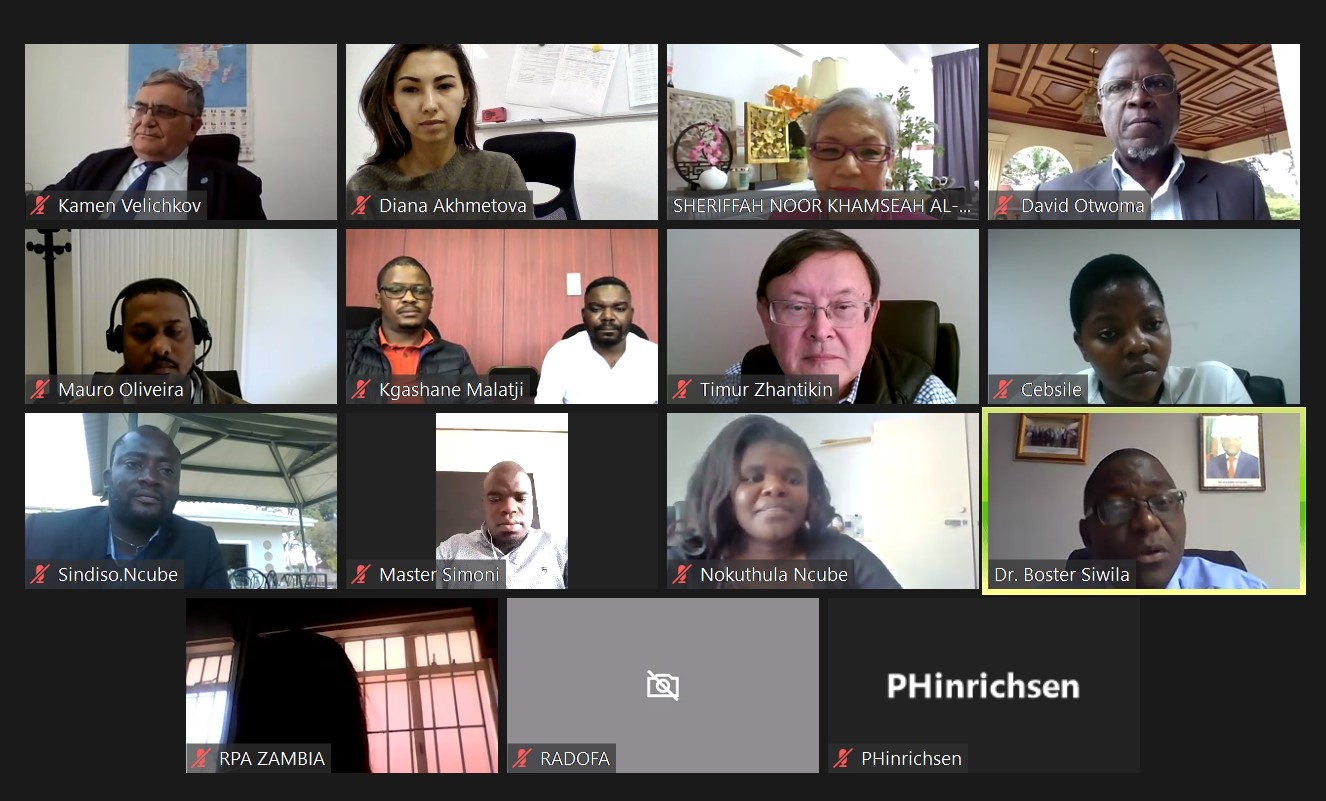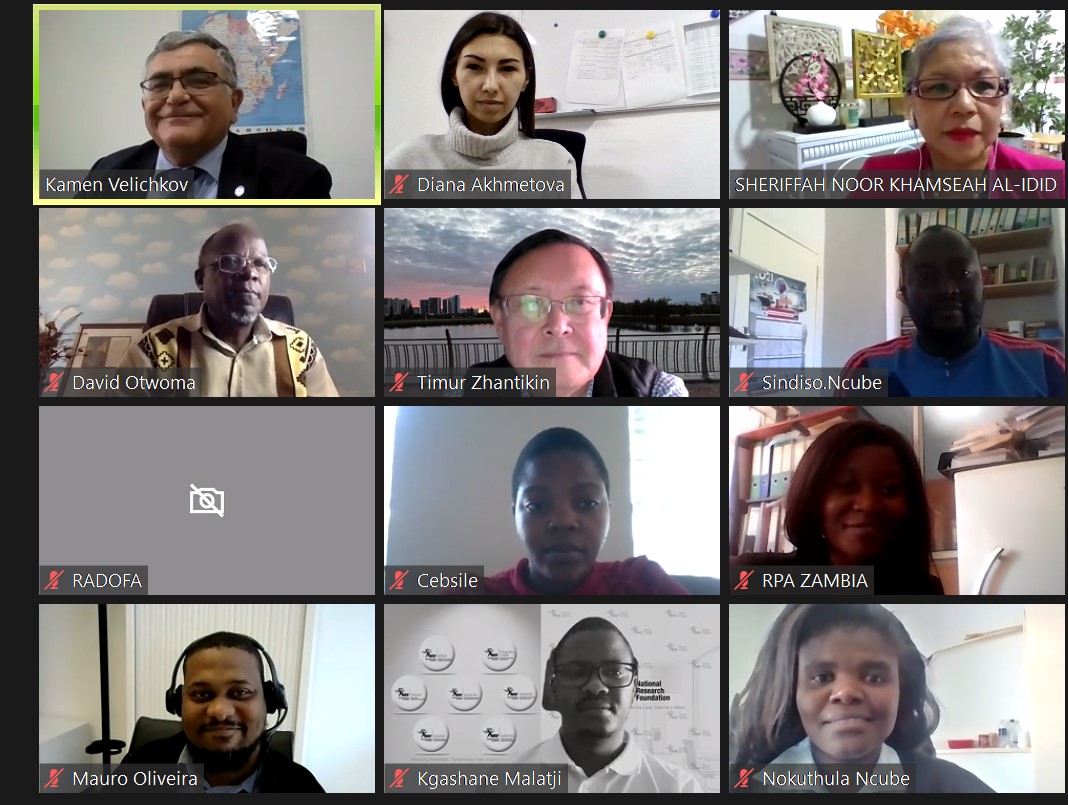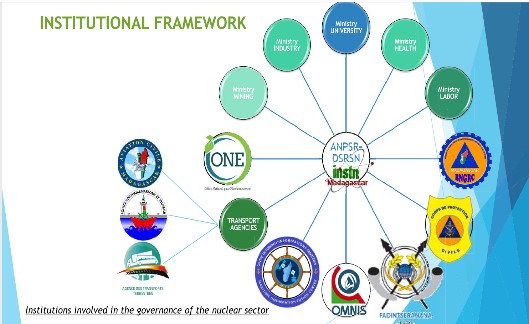The SADC Project Working Group on the Regional Report completes successfully six rounds of discussions

The Working Group of experts for the implementation of the EU – funded Project MC 5.01/15B: Support to the Southern African States in Nuclear Safety and Safeguards, was established with the purpose of accomplishing the tasks of Work Package 3, i.e. to conduct a regional case study on the production and transport of uranium in SADC countries, to identify discrepancies, and, to provide recommendations for regional synchronization in line with the best international practices. The group held its meetings through video conferences on 22 and 23 September; and on 12, 13, 18 and 29 October 2021.
The comparative regional analysis was based on the findings of the earlier elaborated country-specific reports, describing the state of affairs in more than half of the SADC member states. The Working group therefore comprised of the authors of the national reports, produced under the Project, namely: Cebsile Dlamini, Radiation safety Officer, Eswatini Environment Authority; Heritsoa Radofa, Legal Advisor, Radiological Safety and Nuclear Security Directorate, INSTN, Madagascar; Master Simoni, Professional in Nuclear Science & Technology, Safety and Security, AERA, Malawi; Mauro Grande Oliveira, National Agency of Atomic Energy (ANEA), Mozambique; Dr. Kgashane Malatji, iThemba LABS, South Africa; Said Soudjay, Faculty of Science and Technology, University of Comoros; Sindiso Ncube, Consultant, Micro Radiation Consultancy Company, Zimbabwe; and Dr. Jeremiah Kebwaro, Department of Physical and Biological Sciences, Karatina University, Kenya. The WG was presided by D-r Boster Dearson Siwila, Head of Radiation Protection Authority, Zambia, and coordinated by Melody Nsofwa, Principal Radiation Safety Officer at the same institution.
 Members of the Project’s external Expert Team provided valuable remarks and observations and guided the collaborative effort. This Team was headed by Dr. Timur Zhantikin, Director, Kazakhstan Nuclear Power Plants Ltd., and comprised: Paul Hinrichsen, Principal Specialist: Transport, National Nuclear Regulator, South Africa; Sheriffah Noor Khamsea al Idid, Innovation and Nuclear Advocate, Malaysia; Dr. David Otwoma, Chief Analyst, National Commission for Science Technology and Innovation, Kenya, and ISTC National Contact Point for that country.
Members of the Project’s external Expert Team provided valuable remarks and observations and guided the collaborative effort. This Team was headed by Dr. Timur Zhantikin, Director, Kazakhstan Nuclear Power Plants Ltd., and comprised: Paul Hinrichsen, Principal Specialist: Transport, National Nuclear Regulator, South Africa; Sheriffah Noor Khamsea al Idid, Innovation and Nuclear Advocate, Malaysia; Dr. David Otwoma, Chief Analyst, National Commission for Science Technology and Innovation, Kenya, and ISTC National Contact Point for that country.
The Regional report is entitled: Comparative analysis of the state of nuclear safety and safeguards in Southern African countries participating in EU Project MC 5.01 15B. Its structure comprised the following chapters: country profiles and development strategies, national legal and regulatory frameworks uranium extraction, nuclear power and applications; safe transportation of UOC; relevant international instruments enforced in the national legislation and their implementation. The collection of country-specific data was carried out through dedicated questionnaires. Once gaps in comparison with the international standards and prevailing practices were established the Working Group contemplated ways to overcome them and included these recommendations in a proposal for a regional Action Plan. The Action plan not only synthesizes the appropriate steps to be undertaken nationally, but also seeks to boost regional collaboration and synchronization of norms and policies.
In view of the comprehensive character of the nuclear country specific snapshot, in the apt expression of Dr. Timur Zhantikin, the findings may constitute a good input into the first stage of an IAEA mission, for example a physical protection advisory mission. Project participating states may receive, upon request, further assistance from IAEA in strengthening their national nuclear safety and security regimes, systems and measures. Moreover, the regulatory systems of the country should be adjusted to current and planned nuclear activities.
In terms of capacity building, the Report recommendations flagged the idea of a regional training center. The proposal, however, should further be carefully calibrated, to account accurately how many experts would be needed in what timeframe. Also, as Sheriffah Noor observed, it is critical to identify who are the stakeholders that required this training. Previously, ISTC organized a series of four webinars on Stakeholders Engagement. Further webinars might help form national coordination committees, and appoint a National Focal Point on transport issues, to improve information exchange with neighbors and internationally. Paul Hinrichsen elucidated the challenges of transporting NORM (Naturally Occurring Radioactive Materials) in accordance with the requirements of IAEA Regulations for the Safe Transport of Radioactive Material (SSR-6). D-r David Otwoma welcomed the discussed Action Plan that, although ambitious, may bring wins such as monitoring mechanism of UOC transportation.
 The Working Group sessions provided venue for peer-to-peer review of country specific reports. The four reports on the Project’s focus countries – Tanzania, Malawi, Zambia and Namibia – have been presented during the ISTC webinars last summer. Further to these deliverables, five more national reports were elaborated. Cebsile Dlamini authored the report entitled “Assessment of the national legal regulatory and institutional infrastructure for the Kingdom of Eswatini”. It reflected the situation in a small SADC state, where the regulatory system is in a nascent form. By contrast, Dr. Kgashane Malatji presented the case of South Africa, a standalone country in Southern Africa, with fully fledged advanced nuclear sector and notable experience in nuclear governance. The main message of the paper was that in order to further improve its leadership, South Africa may decide to establish bilateral arrangements on safe and secure UOC transport with neighboring countries. Sindiso Ncube presented the report on Zimbabwe, Heritsoa Radofa – on Madagascar, and Mauro Grande Oliveira – on Mozambique. The three case studies demonstrated a spectrum of examples of nuclear applications users and atomic power aspirants. Different as they may be in terms of their nuclear policies, the Southern African countries will benefit from regional synchronization of their approaches, under the aegis the Southern African Development Community (SADC), by using the SADC Protocols on trade, on transport and on infrastructural development.
The Working Group sessions provided venue for peer-to-peer review of country specific reports. The four reports on the Project’s focus countries – Tanzania, Malawi, Zambia and Namibia – have been presented during the ISTC webinars last summer. Further to these deliverables, five more national reports were elaborated. Cebsile Dlamini authored the report entitled “Assessment of the national legal regulatory and institutional infrastructure for the Kingdom of Eswatini”. It reflected the situation in a small SADC state, where the regulatory system is in a nascent form. By contrast, Dr. Kgashane Malatji presented the case of South Africa, a standalone country in Southern Africa, with fully fledged advanced nuclear sector and notable experience in nuclear governance. The main message of the paper was that in order to further improve its leadership, South Africa may decide to establish bilateral arrangements on safe and secure UOC transport with neighboring countries. Sindiso Ncube presented the report on Zimbabwe, Heritsoa Radofa – on Madagascar, and Mauro Grande Oliveira – on Mozambique. The three case studies demonstrated a spectrum of examples of nuclear applications users and atomic power aspirants. Different as they may be in terms of their nuclear policies, the Southern African countries will benefit from regional synchronization of their approaches, under the aegis the Southern African Development Community (SADC), by using the SADC Protocols on trade, on transport and on infrastructural development.

